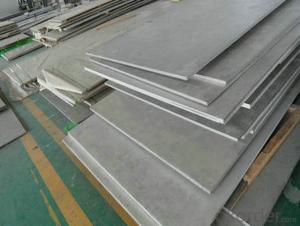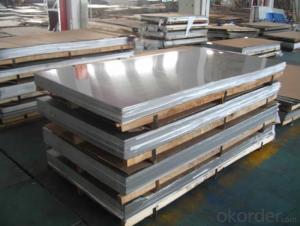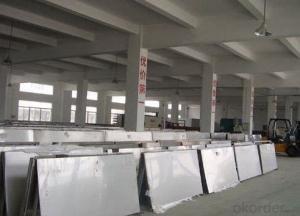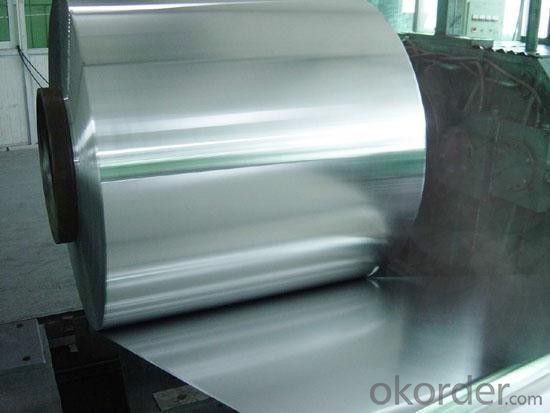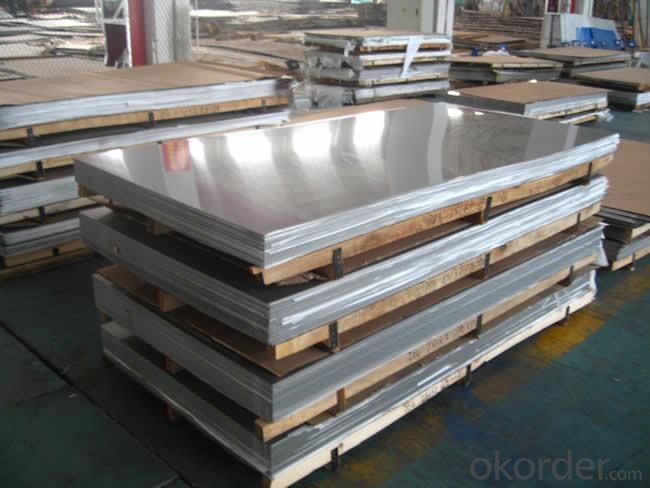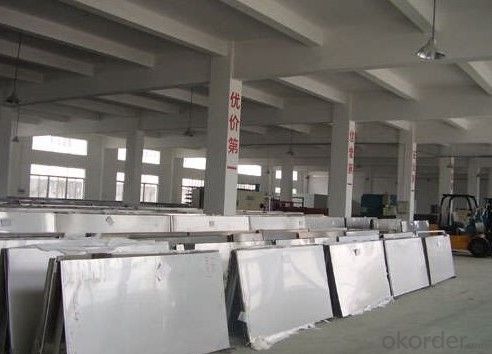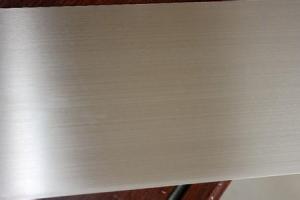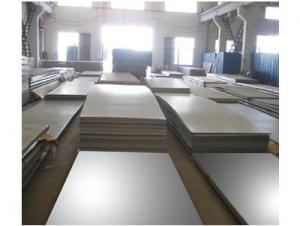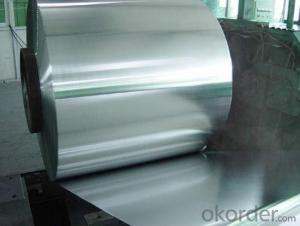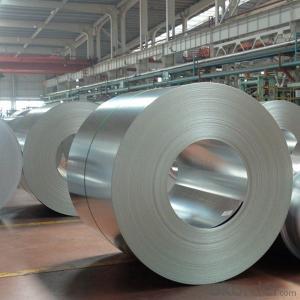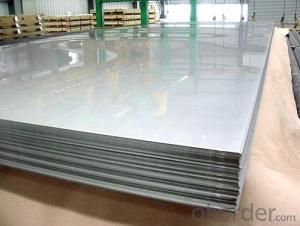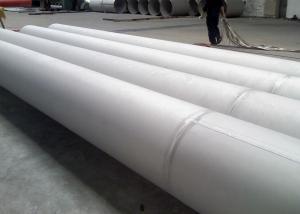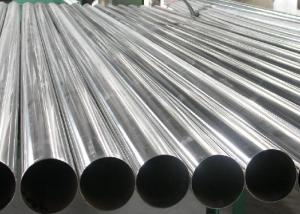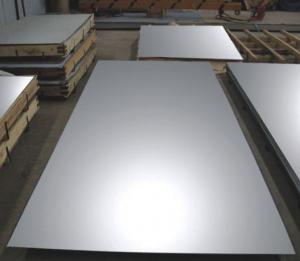Stainless Steel Sheet and Plate with Cutting Service
- Loading Port:
- Shanghai
- Payment Terms:
- TT OR LC
- Min Order Qty:
- 10000 m.t.
- Supply Capability:
- 5000000 m.t./month
OKorder Service Pledge
OKorder Financial Service
You Might Also Like
Specifications of stainless steel
304 stainless Steel Plate
stainless steel plate,steel sheet,steel plate
Standard: ASTM,GB,DIN,JIS,ISO,EN,etc.
TISCO stainless Steel Plate 304/NO.1 finished
stainless steel plate,steel sheet,steel plate
Standard: ASTM,GB,DIN,JIS,ISO,EN,etc.
Delivery short and low cost advantage.
Description of stainless steel:
stainless steel plate,hot rolled stainless steel plate,cold rolled stainless steel plate,stainless steel sheet,steel sheet,sheet
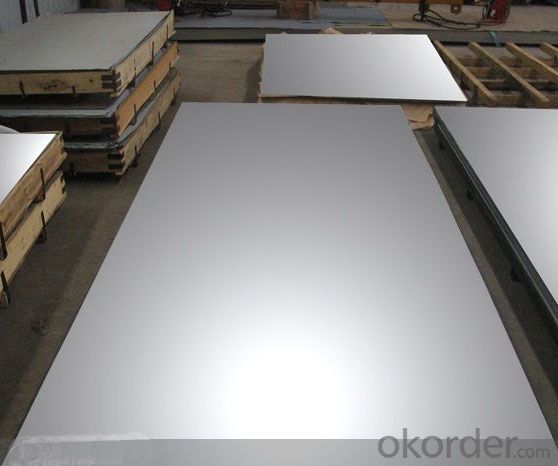

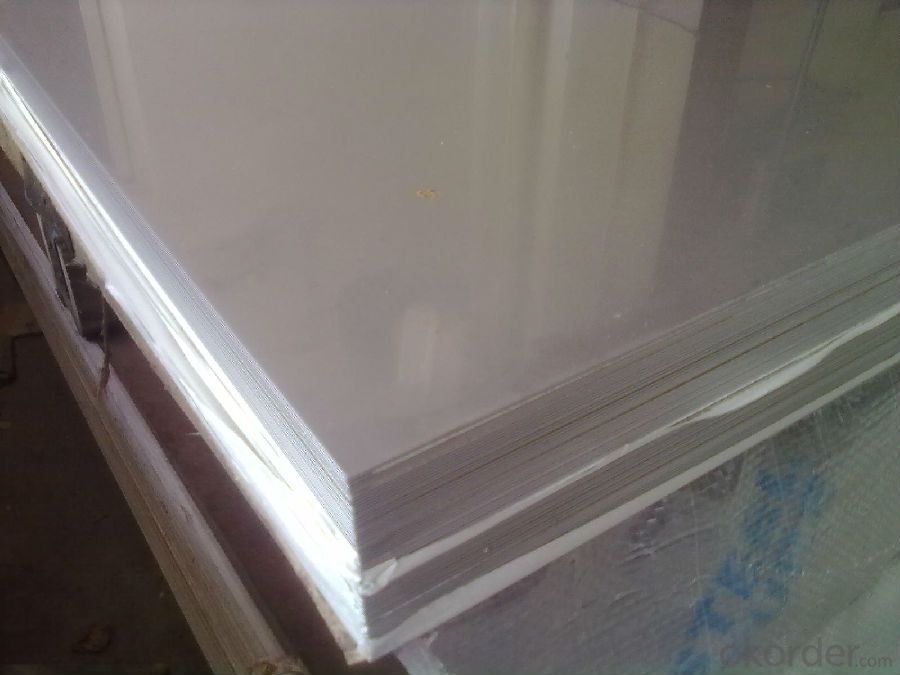


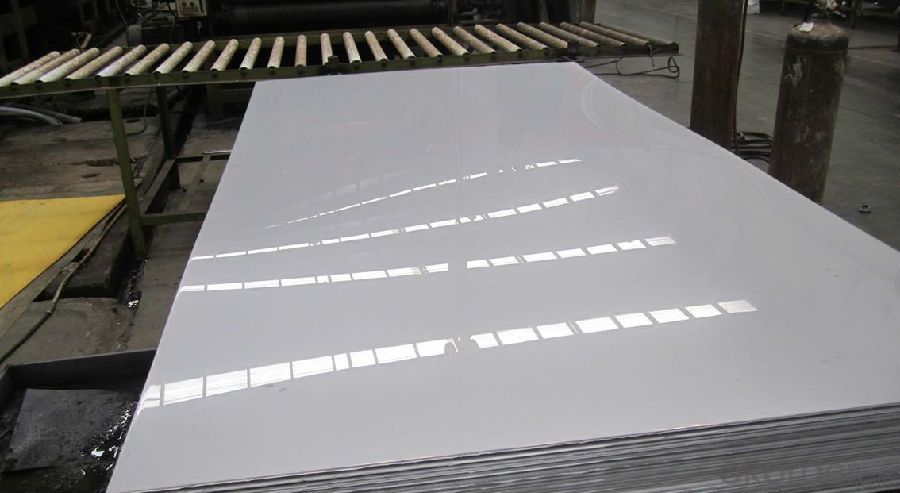
Material of stainless steel:
304,304L,309S,310S,316,316L,316Ti,317L,317L,321,347H,409,409L,410S,420,430,201,202,etc.
Thickness of stainless steel:
From 0.3mm to 100mm
Width of stainless steel:
1000mm,1219mm,1250mm,1500mm,1800mm,2200mm,2500mm or as your requirement
Length of stainless steel:
2000mm,2438mm,2500mm,6000mm,6096mm or as your requirement
Application of stainless steel:
Stainless steel plate applies to construction field, ships building industry, petroleum & chemical industries, war and electricity industries, food processing and medical industry, boiler heat exchanger, machinery and hardware fields. Our company has cooperative relation between the domestic agents. Stainless steel plate can be made accordingto the customers requirements. Fasten delivery. Quality assured.Welcome to order more.
Contacts
If you have any question,please feel free to contact us.
- Q: Are stainless steel sheets suitable for food processing applications?
- Yes, stainless steel sheets are highly suitable for food processing applications. Stainless steel is known for its excellent corrosion resistance, making it ideal for use in environments that involve exposure to moisture, chemicals, and food substances. It is also non-porous, which means it does not absorb bacteria or other contaminants, making it hygienic and easy to clean. Stainless steel sheets are also heat resistant and can withstand high temperatures, making them suitable for cooking and processing applications. Additionally, stainless steel is durable and long-lasting, ensuring that it can withstand the demands of food processing operations. Overall, stainless steel sheets are a popular choice in the food industry due to their cleanliness, durability, and resistance to corrosion.
- Q: Can stainless steel sheets be used for elevator panels?
- Yes, stainless steel sheets can be used for elevator panels. Stainless steel is a popular material choice for elevator panels due to its durability, strength, and aesthetic appeal. It is resistant to corrosion, damage, and wear, making it suitable for high-traffic areas like elevators. Stainless steel panels are also easy to clean and maintain, which is important for maintaining a clean and polished appearance in elevators. Additionally, stainless steel can be easily customized and fabricated to fit specific elevator dimensions and design requirements. Overall, stainless steel sheets are a reliable and versatile option for elevator panels.
- Q: Are stainless steel sheets resistant to corrosion?
- Yes, stainless steel sheets are generally highly resistant to corrosion due to the presence of chromium in their composition, which forms a protective oxide layer on the surface. This oxide layer acts as a barrier, preventing the metal from being exposed to corrosive elements and ensuring its durability in various environments.
- Q: 904L stainless steel plate generally used in what industry is more?
- Petroleum and petrochemical equipment, such as reactors in petrochemical equipment.* storage and transportation equipment for sulfuric acid, such as heat exchangers.* the main parts of a power plant flue gas desulfurization device are: Tower of absorption tower, flue, screen door, internals, spraying system, etc.. * scrubbers and fans in organic acid treatment systems.* sea water treatment plant, sea water heat exchanger, paper industry equipment, sulphuric acid and nitric acid equipment, acid making, pharmaceutical industry and other chemical equipment,Pressure vessel, food equipment.
- Q: What are stainless steel sheets?
- Stainless steel sheets are flat pieces of metal made from stainless steel, a type of alloy that contains chromium, nickel, and other elements. These sheets are highly versatile and widely used in various industries for their excellent corrosion resistance, durability, and aesthetic appeal. They are manufactured through a process called hot rolling or cold rolling, which involves passing the steel through a series of rollers to achieve the desired thickness and finish. Stainless steel sheets are commonly used for applications such as construction, automotive manufacturing, kitchenware, appliances, and architecture. They come in different grades, surface finishes, and sizes to cater to different requirements. Whether it's for decorative purposes or functional applications, stainless steel sheets offer a reliable and long-lasting solution.
- Q: How do I remove stains or marks from stainless steel sheets?
- To effectively eliminate stains or marks on stainless steel sheets, a few simple steps can be taken: 1. Initiate the process by cleansing the stainless steel surface with warm water and a mild detergent or dish soap. Take a soft cloth or sponge and gently scrub the affected area. Rinse thoroughly with clean water and dry with a towel. 2. If the stain persists, the utilization of white vinegar can be attempted. Dampen a cloth or sponge with vinegar and gently rub the stained area. The acidic properties of vinegar aid in breaking down the stains. Rinse the surface with water and dry it completely. 3. In the case of more stubborn stains or marks, a paste can be concocted using baking soda and water. Apply the paste to the affected area and gently rub it in using a soft cloth or sponge. Allow it to sit for a few minutes, then rinse with water and dry thoroughly. 4. Should the aforementioned methods prove ineffective, resorting to a stainless steel cleaner specifically designed for stain or mark removal is advisable. Adhere to the instructions on the cleaner's packaging for optimal results. Remember to rinse the surface thoroughly and ensure complete drying after employing a commercial cleaner. 5. It is essential to refrain from using abrasive cleaners, steel wool, or harsh chemicals on stainless steel sheets, as they possess the potential to scratch or damage the surface. Additionally, it is recommended to always test any cleaning method or product on a small, inconspicuous area before applying it to the entire surface. By adhering to these steps and utilizing appropriate cleaning methods, stains or marks can be effectively eradicated from stainless steel sheets, thereby restoring their original shine and appearance.
- Q: Is stainless steel plate permitted to contact galvanized material?
- Mainly depends on what kind of material you use stainless steel. If it is 304 or 316, it will not be corroded. I am specializing in the production of stainless steel pipe enterprises, for this I am still more adept.
- Q: What is the minimum thickness available for stainless steel sheets?
- The minimum thickness available for stainless steel sheets can vary depending on the specific grade and manufacturing capabilities, but it is typically around 0.4 millimeters (0.0157 inches) or even thinner.
- Q: Can stainless steel sheets be used in high-pressure applications?
- Stainless steel sheets are indeed applicable in high-pressure scenarios. Renowned for its remarkable resistance to corrosion and impressive strength, stainless steel is suitable for a variety of industrial uses, especially those involving high-pressure conditions. Its exceptional strength enables it to endure the force exerted by high-pressure fluids or gases without distorting or breaking. Moreover, stainless steel sheets can be shaped and sized as desired, facilitating their utilization in a wide array of high-pressure applications such as pressure vessels, pipelines, hydraulic systems, and heat exchangers. All in all, stainless steel sheets are a dependable and long-lasting option for high-pressure circumstances due to their inherent strength and corrosion resistance characteristics.
- Q: What is the machinability of stainless steel sheets?
- The machinability of stainless steel sheets can differ depending on the grade of stainless steel and its specific composition. Generally, stainless steel is known to have lower machinability in comparison to carbon steel or aluminum. This is primarily because of its higher strength, hardness, and work-hardening characteristics. During machining, stainless steel tends to work-harden, resulting in increased cutting forces and tool wear. It also has lower thermal conductivity, which can lead to higher temperatures during machining operations, further contributing to tool wear. Additionally, stainless steel has a unique chip formation behavior, often resulting in stringy and hard-to-break chips. However, advancements in cutting tool technology and machining techniques have made it possible to enhance the machinability of stainless steel. For example, using appropriate cutting tool geometries, coatings, and coolant/lubricant can help reduce cutting forces, minimize tool wear, and improve chip control. It is important to note that different grades of stainless steel can display varying levels of machinability. Austenitic stainless steels, such as 304 and 316, are generally more challenging to machine compared to ferritic or martensitic stainless steels. This is because of their higher nickel and chromium content, which contribute to their excellent corrosion resistance but also make them harder to machine. Overall, although machining stainless steel sheets may present some difficulties, with the right tools, techniques, and expertise, it is possible to achieve satisfactory machinability and produce high-quality components from stainless steel sheets.
Send your message to us
Stainless Steel Sheet and Plate with Cutting Service
- Loading Port:
- Shanghai
- Payment Terms:
- TT OR LC
- Min Order Qty:
- 10000 m.t.
- Supply Capability:
- 5000000 m.t./month
OKorder Service Pledge
OKorder Financial Service
Similar products
Hot products
Hot Searches
Related keywords
